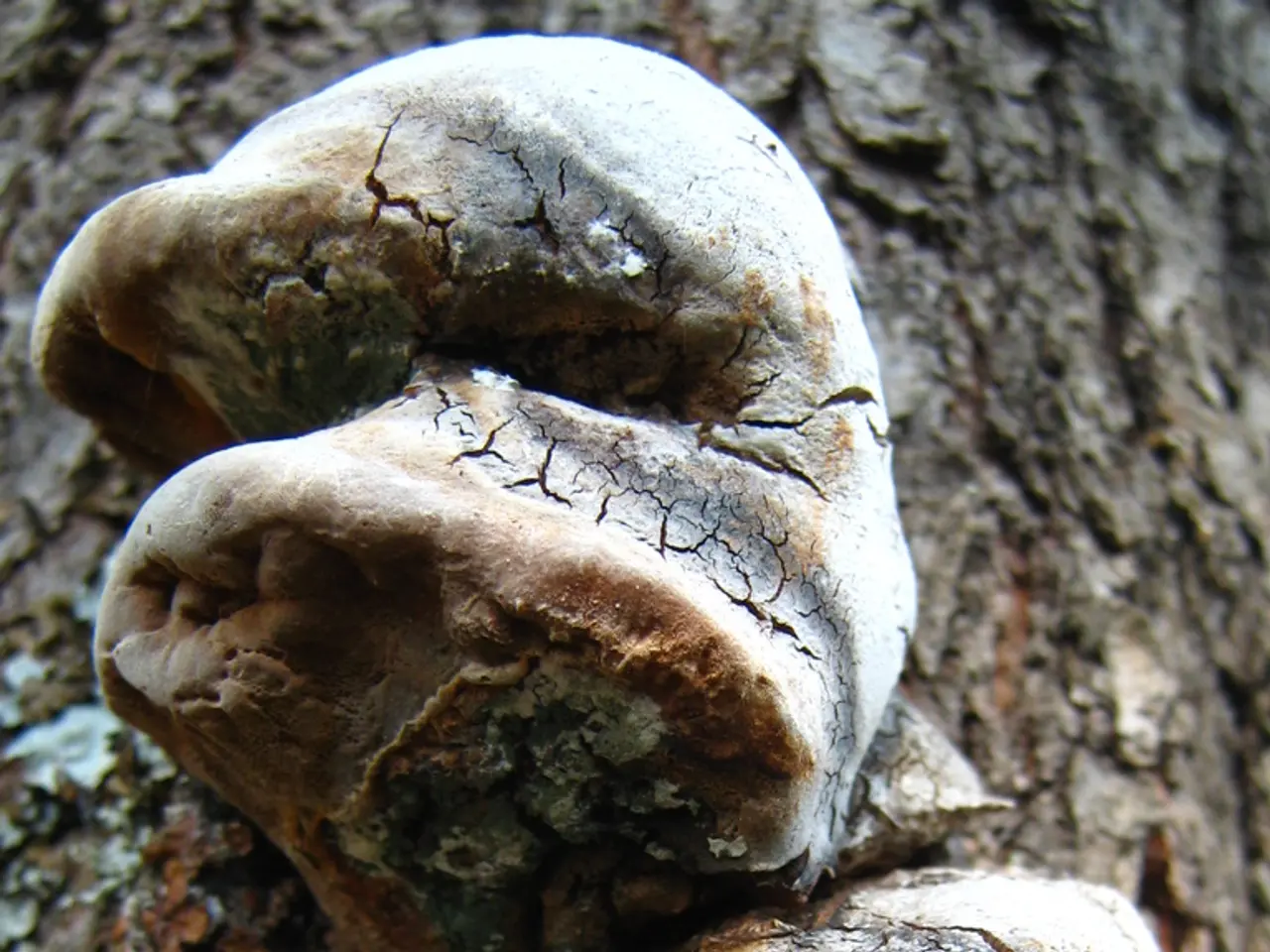Lung Histoplasmosis – Imagery and Further Insights
In the eastern and central regions of the United States, particularly near the Ohio and Mississippi River valleys, a common fungal infection known as histoplasmosis can pose a threat. The disease is caused by inhaling spores of Histoplasma capsulatum, a fungus that thrives in soil enriched with bird or bat droppings [2].
Most people either do not develop symptoms or have only mild flu-like symptoms such as fever, headache, body aches, and a cough, which usually clear up within a month [1]. However, in some cases, histoplasmosis can lead to the formation of small lung nodules called granulomas. These benign, or noncancerous, clumps of white blood cells and other tissue can block the spread of the fungal infection [3].
Radiologically, chronic pulmonary histoplasmosis frequently shows cavitation and pulmonary nodules [5]. In more severe cases, the disease can progress, causing symptoms such as pneumonia, chest pain, shortness of breath, and coughing up blood [1][5].
When visible in the lungs, histoplasmosis may appear as pneumonitis, hilar lymphadenopathy, or granulomas [6]. In immunocompromised individuals, such as those with advanced HIV, histoplasmosis can develop into progressive disseminated histoplasmosis (PDH), which can cause complications such as lip and mouth ulcerations, gastrointestinal bleeding, enlarged liver and spleen, problems with the central nervous system, and decreased red and white blood cells, which may cause bone marrow failure [7].
Diagnosing histoplasmosis may involve various diagnostic tests, including chest X-rays, CT scans, and PET scans [4]. A chest X-ray may highlight some visual symptoms of histoplasmosis in the lungs, such as lung tissue inflammation and lymph node swelling. However, doctors may use other types of diagnostic radiology exams, specifically CT scans, to get more detailed images of the lungs [8].
If chest X-rays show nodules with characteristics similar to lung cancer, doctors may conduct additional tests that examine the person's urine, blood, or tissues for signs of the fungus [3].
After someone receives a histoplasmosis diagnosis, they can discuss with their doctor about how histoplasmosis may affect their lungs, potential treatments and side effects of treatments, managing histoplasmosis with any other pre-existing conditions, any necessary precautions during recovery, and ways to prevent additional histoplasmosis infections [9].
The American Lung Association recommends that people contact their doctor if they develop symptoms of a respiratory infection and live in an area where histoplasmosis infection rates are high, especially if they have a weakened immune system [10].
In summary, while most acute cases of histoplasmosis heal on their own, the disease can have severe consequences, especially for immunocompromised individuals. It is essential to be aware of the symptoms and seek medical attention if necessary.
- Histoplasmosis, a common fungal infection in specific regions of the United States, can sometimes progress to respiratory-conditions like pneumonia, causing symptoms like chest pain, shortness of breath, and coughing up blood.
- In immunocompromised individuals, such as those with advanced HIV, histoplasmosis can become progressive disseminated histoplasmosis (PDH), leading to complications like lip and mouth ulcerations, gastrointestinal bleeding, central nervous system problems, and decreased red and white blood cells.
- To diagnose histoplasmosis, doctors may use science-based diagnostic tests like chest X-rays and CT scans to identify the signs of the fungal infection in the lungs, particularly if chest X-rays show nodules with characteristics similar to lung cancer, prompting additional tests for signs of the fungus.




